Lavender Plant Care: How to Grow This Fragrant Favorite Indoors and Out
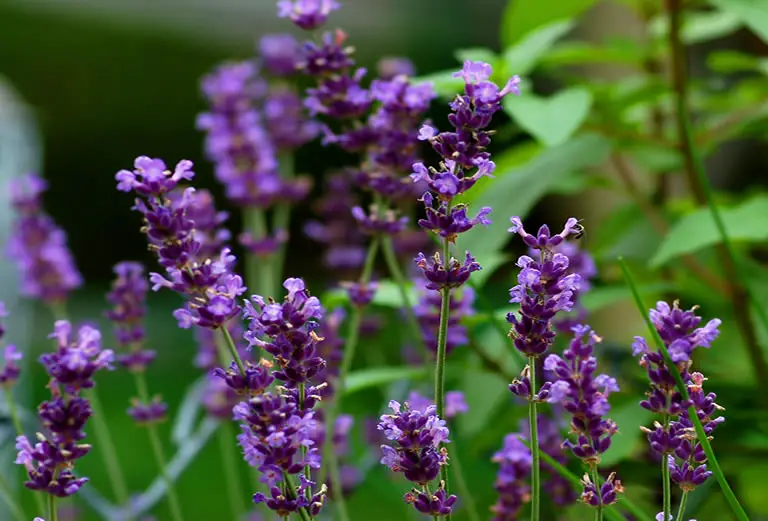
Lavender is one of the most beloved and versatile plants in the garden world—prized for its soothing scent, elegant flowers, and long list of uses. From garden borders to indoor pots, this flowering herb offers beauty, fragrance, and even culinary value.
With the right setup, lavender can thrive both inside your home and outdoors in beds, borders, or containers. And with so many varieties to choose from—each with unique traits—you’re sure to find one that suits your style and climate.
Here’s how to care for lavender year-round and keep it looking and smelling its best.
Table of Contents
- What Makes Lavender Unique
- Light Requirements: Full Sun Is Best
- Watering: Let It Dry Between Waterings
- Soil and Potting: Keep It Dry and Well-Drained
- Fertilizer: Less Is More
- Pruning and Maintenance: Keep It Compact and Productive
- Best Spot in the Home
- Outdoor Lavender Care
- Most Popular Lavender Varieties
- Common Problems and Fixes
- Final Thoughts
What Makes Lavender Unique
Lavender belongs to the genus Lavandula and is part of the mint family (Lamiaceae).
Native to the Mediterranean region, this drought-tolerant shrub thrives in sunny, dry environments with well-draining soil.
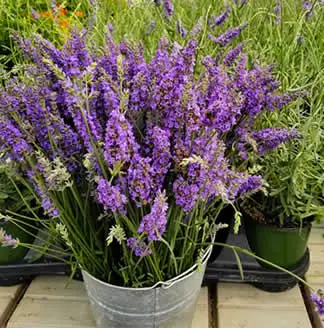
It’s famous for its fragrant purple blooms and narrow, silvery-green foliage.
Lavender has been used for centuries in perfumery, herbal medicine, culinary recipes, and even as a natural pest repellent.
There are more than 45 species and hundreds of cultivars of lavender.
While many people associate it with sprawling outdoor gardens, several compact varieties are perfect for pots and indoor displays.
Light Requirements: Full Sun Is Best
Lavender loves full sun, and it won’t perform well without it.
Outdoors, plant it in a location that receives at least 6–8 hours of direct sunlight each day.
Indoors, place your lavender in a south-facing window or under a strong grow light to prevent weak, leggy growth.
Without enough light, lavender can become sparse, droopy, or stop blooming altogether.
Watering: Let It Dry Between Waterings
Lavender is drought-tolerant once established and prefers to dry out between waterings.
Whether it’s in the garden or in a container, water only when the top inch or two of soil is completely dry.
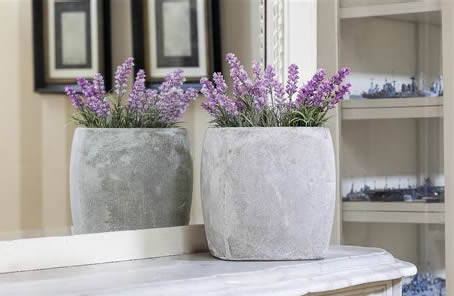
For outdoor plants, watering once or twice a week during dry spells is usually enough.
For indoor plants, check the soil every few days and water deeply when dry, allowing excess moisture to drain.
Avoid overwatering, which can lead to root rot—a common issue with potted lavender.
Soil and Potting: Keep It Dry and Well-Drained
Lavender thrives in well-draining, sandy, or rocky soil with a slightly alkaline pH (6.5–7.5) like this.
Poor drainage is the enemy of healthy lavender, especially in containers.
Use a cactus mix or create your own by combining:
-
2 parts potting soil
-
1 part sand
-
1 part perlite or small gravel
Always use containers with drainage holes, and avoid overly rich or dense soils.
In the garden, amend clay-heavy soil with sand or gravel to improve aeration and drainage.
Fertilizer: Less Is More
Lavender doesn’t need heavy feeding. In fact, too much fertilizer can cause leggy growth and reduced flowering.
Feed once a month in spring and early summer using a low-nitrogen fertilizer with an NPK around 5-10-10 like this one or 3-5-6 like this.
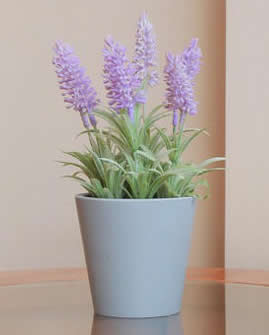
Avoid feeding in late summer or fall, as this can trigger new growth that’s vulnerable to winter damage.
If growing outdoors in poor soil, you can add a handful of compost or organic matter in spring to gently support the plant’s needs.
Pruning and Maintenance: Keep It Compact and Productive
Pruning is essential to keep lavender healthy, bushy, and blooming. In early spring, trim back any dead wood or damaged stems.
After the first bloom cycle, deadhead spent flowers to encourage a second flush.
In late summer or early fall, give the plant a gentle shaping—cutting back by about one-third—but never into old, woody stems.
This keeps the plant compact and prevents it from becoming leggy.
Lavender grows best when pruned regularly and allowed to regrow from soft, green wood.
Consider pruning your lavender plant for propagation purposes as outlined in our article Lavender Propagation: 4 Reliable Ways to Multiply This Fragrant Favorite.
Best Spot in the Home
Lavender grows best indoors in bright sunrooms, kitchen windows, or warm living rooms with lots of light and airflow.
It prefers a location with good air circulation and low humidity—keep it away from steamy bathrooms or damp corners.
The scent also makes it perfect for bedrooms where its calming aroma can help support sleep and relaxation.
Outdoor Lavender Care
Lavender grows beautifully outdoors in USDA zones 5–11, depending on the variety.
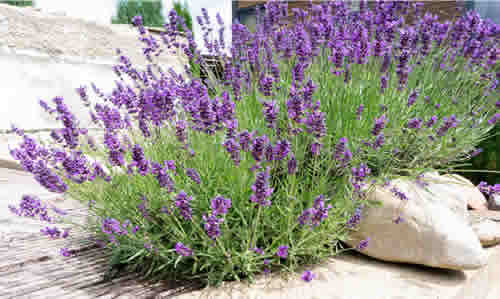
-
Choose a sunny, open spot with excellent drainage.
-
Plant on a slight mound or in raised beds if soil is heavy or compacted.
-
Space plants at least 12–24 inches apart to allow airflow and prevent disease.
-
Water young plants regularly until established, then reduce watering frequency.
-
Mulch with gravel or light compost—avoid organic mulches that retain moisture.
In colder zones, protect your lavender in winter with a layer of straw or bring potted plants indoors when frost is expected.
Most Popular Lavender Varieties
Lavender comes in a wide range of sizes, scents, and bloom shapes. Here are the most popular types used for both indoor and outdoor growing:
English Lavender (Lavandula angustifolia) – The classic variety with rich fragrance and long, narrow spikes of purple flowers. Cold hardy and compact.
French Lavender (Lavandula dentata) – Features toothed leaves and distinctive tufted blooms. Less hardy but more ornamental. Great for containers.
Spanish Lavender (Lavandula stoechas) – Recognized by its “rabbit ear” flower bracts. More heat-tolerant but less cold hardy. Lovely in decorative pots.
Mona Lavender (Plectranthus ‘Mona Lavender’) – Technically not a true lavender, but a lavender-colored houseplant in the mint family. Grows well indoors in indirect light.
Lavandin (Lavandula x intermedia) – A hybrid of English and Portuguese lavender. Taller, with high oil content and strong fragrance. Perfect for hedges and drying.
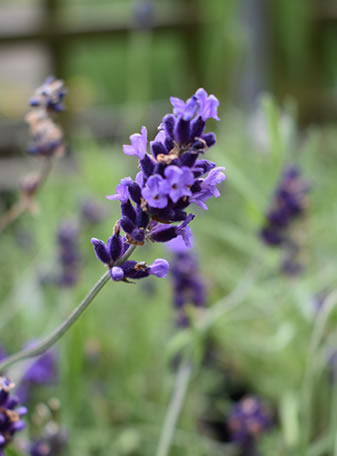
Hidcote and Munstead – Popular compact cultivars of English lavender known for rich color and fragrance. Great for borders and pots.
Each variety has its own bloom season, scent profile, and tolerance for heat or cold—so choose based on your local climate and aesthetic preferences.
Common Problems and Fixes
Yellowing leaves
Usually caused by overwatering or poor drainage.
Let soil dry and check the pot’s drainage.
No blooms
Often a result of too little light or too much nitrogen.
Move to a sunnier spot and avoid rich fertilizers.
Leggy growth
Lack of pruning or too much shade.
Trim back and place in a brighter location.
Fungal disease
Appears as black spots or mold.
Improve airflow, avoid overhead watering, and remove affected foliage.
Aphids or whiteflies
Rinse off with water or use a neem oil spray to control pests naturally.
Final Thoughts
Lavender is more than just a pretty face—it’s a low-maintenance, high-reward plant that brings fragrance, beauty, and functionality to any space.
Whether you’re planting a row in your garden or keeping a small pot by your bed, a little sun and well-draining soil go a long way.
Choose the variety that best suits your space, prune it regularly, and don’t overwater—and you’ll enjoy years of aromatic blooms and herbal magic.
Thanks for reading! I'm Michael — houseplant fanatic and your Pinterest plant guide.
Follow me on Pinterest for fresh updates 🌿



